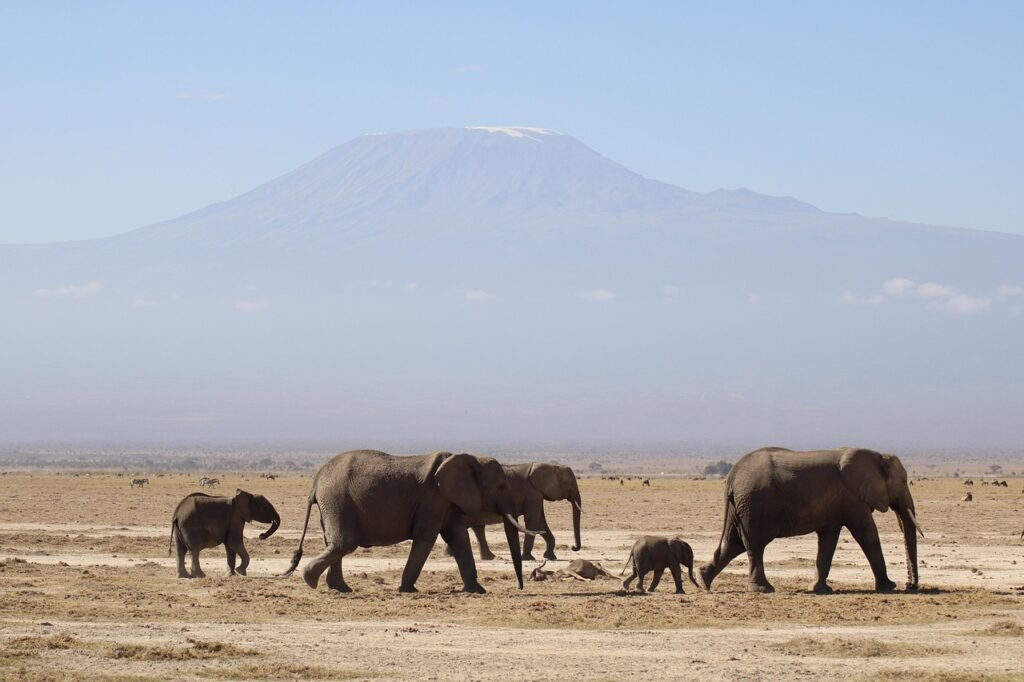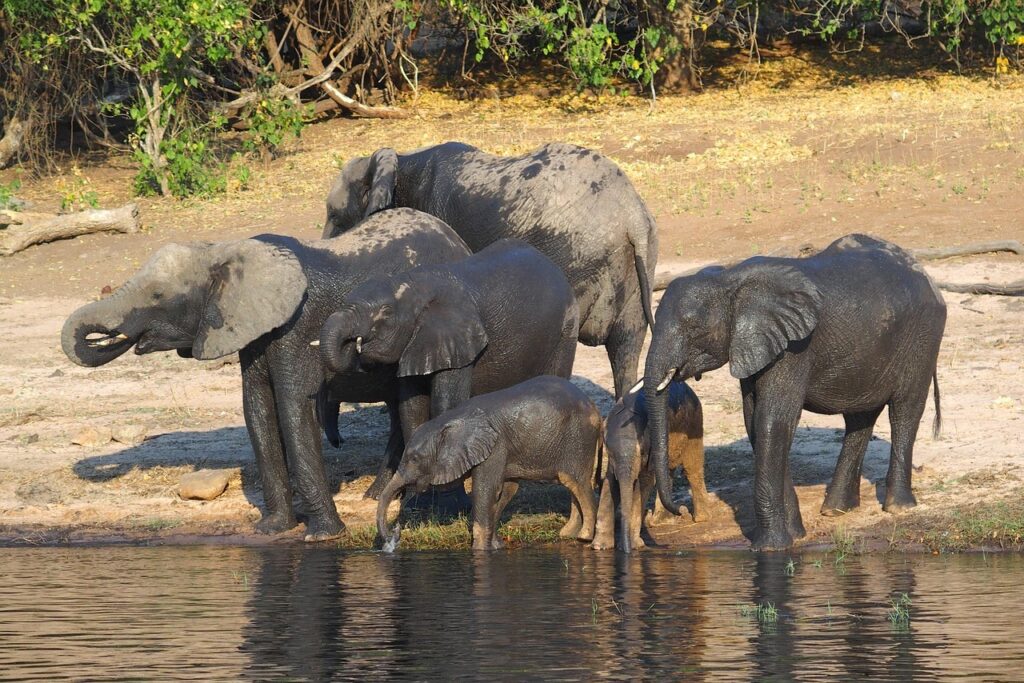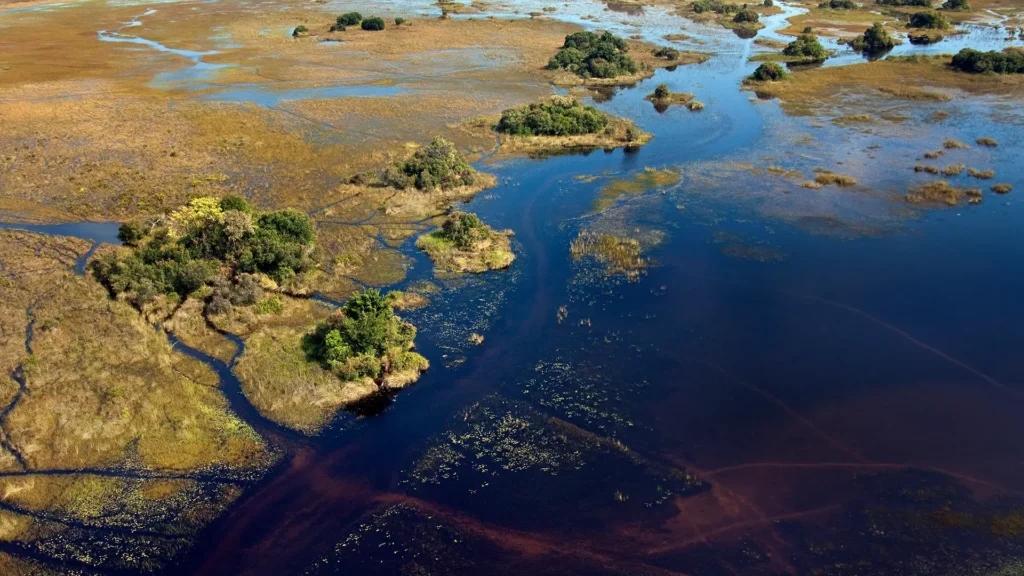Tucked away in Botswana’s pristine wilderness, the Khwai region is a hidden gem that deserves a spot on every nature lover’s travel list.
Botswana’s Okavango Delta, renowned for its picturesque landscapes and rich wildlife, adds to the region’s significance.
Located along the eastern border of the Moremi Game Reserve, Khwai offers a blend of untouched beauty, vibrant wildlife, and authentic safari experiences that rival any in Africa.
Whether you’re an adventurer, a photographer, or someone looking for peace in the wild, Khwai welcomes you with open arms.
Here are the top 10 reasons to visit Khwai, Botswana:
Introduction to Khwai
Nestled in the heart of Botswana’s Okavango Delta, Khwai is a stunning destination that promises an unforgettable experience for nature lovers and wildlife enthusiasts.
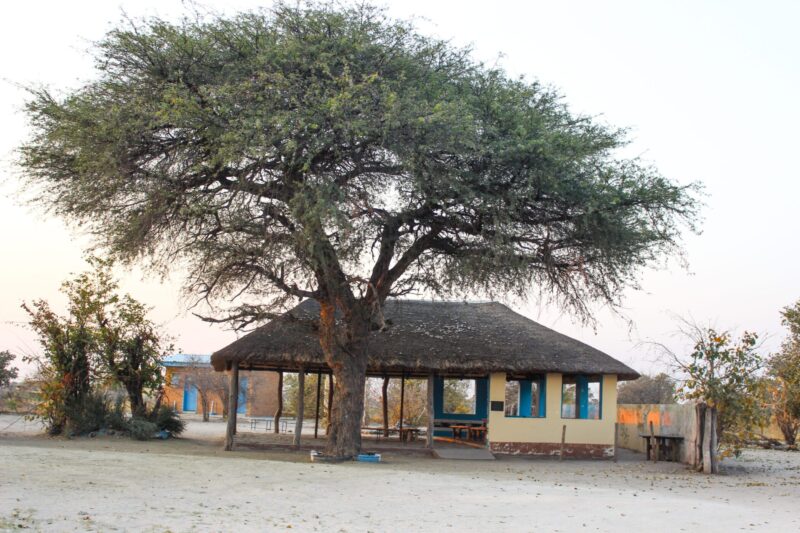
This beautiful area, located near the Moremi Game Reserve, is renowned for its incredible landscapes and diverse ecosystems.
The Khwai River, which meanders through the concession, creates a unique and scenic waterway that attracts a wide range of wildlife, including majestic elephants, powerful lions, and the elusive African wild dogs.
Visitors to Khwai can immerse themselves in the beauty of the African bush and enjoy a variety of activities, including thrilling game drives, serene walking safaris, and peaceful boating safaris.
Whether you’re exploring the open grasslands or the shallow flooded pans, Khwai offers a rich tapestry of nature at its finest.
What are The Top 10 Reasons to Visit Khwai?
1. Unparalleled Wildlife Encounters
Khwai is one of the most wildlife-rich regions in Botswana, known for its high concentration of wildlife and consistently excellent game viewing.
The region is particularly famous for its elephants, which symbolize strength and resilience, especially during the dry season when they gather along the river.

Visitors can expect to see elephants, lions, leopards, African wild dogs, and buffalo, often within a single game drive. Unlike some parts of Africa where sightings can be hit or miss, Khwai is teeming with animals throughout the year.
The variety of habitats, from floodplains and savannah to woodlands and rivers, supports an incredible diversity of species, making each safari outing unique.
2. Diverse Safari Experiences
What sets Khwai apart from other safari destinations is the variety of activities allowed in the area.
Because Khwai is located outside the Moremi Game Reserve in a community-run concession, it offers more flexibility.
Visitors can enjoy:
- Day and night game drives
- Guided bush walks
- Mokoro excursions in the beautiful Khwai River
- Off-road driving for closer wildlife encounters
- Birding safaris with expert guides
This means you get a more immersive, adventurous experience compared to the stricter rules of national parks.
Additionally, the Khwai Community Area offers unique cultural and wildlife experiences, showcasing the heritage of the BaBukakhwe or River Bushmen and providing a vibrant ecological paradise rich in biodiversity.
3. Abundant Birdlife
Khwai is a birdwatcher’s paradise. Over 400 bird species have been recorded in the area, making it one of the richest birding locations in Botswana.
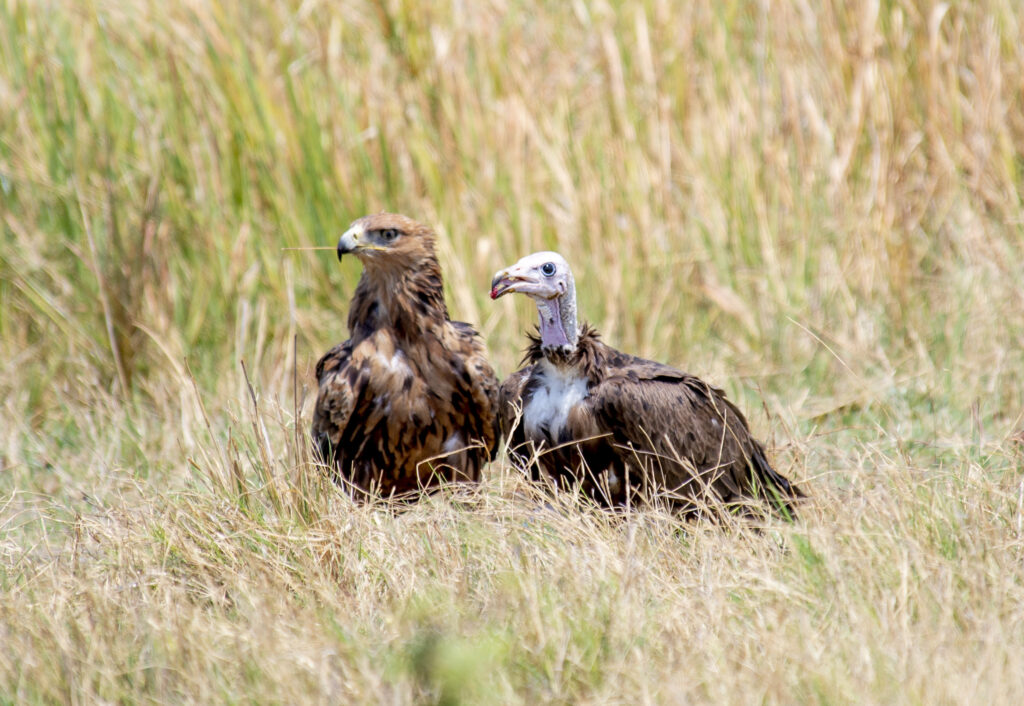
Whether it’s the haunting call of the African fish eagle, the rare sight of a Pel’s fishing owl, or the colorful flashes of bee-eaters and rollers, the region offers spectacular birding moments.
The seasonal floodplains attract large flocks of waterbirds, while the woodlands and dry areas provide habitats for raptors and ground-dwelling species.
4. Community Run Khwai Conservation
The Khwai Concession is managed by the Khwai Development Trust, a local community initiative.
The River Bushmen, particularly the BaBukakhwe community, play a crucial role in managing the Khwai Community Concession, offering insights into their traditional lifestyles and cultural heritage.
This model of eco-tourism ensures that revenue from visitors directly benefits the local people through employment, education, and conservation efforts.
By choosing to visit Khwai, travelers contribute to responsible tourism that empowers local communities and helps protect the fragile ecosystems of the Okavango Delta.
It’s a powerful example of how tourism and conservation can go hand in hand.
5. The Breathtaking Khwai River
The Khwai River acts as a natural border between the Khwai Concession and the Moremi Game Reserve.
The landscape transforms dramatically during different seasons, affecting wildlife behavior and population.
It is a magnet for wildlife, especially during the dry season when water becomes scarce elsewhere. Animals like elephants, hippos, and antelopes gather at the riverbanks, creating dramatic and rewarding game-viewing opportunities.
The river also adds scenic beauty to the landscape, with lush reeds, water lilies, and sun-dappled pools that shimmer in the light.
6. Iconic Mokoro Rides
One of the most serene and unforgettable experiences in Khwai is gliding through the waterways in a mokoro – a traditional dugout canoe steered by a local guide using a long pole.

This slow, quiet mode of travel allows you to observe wildlife up close without disturbing it.
You may encounter elephants bathing, lechwe splashing through the water, or tiny painted reed frogs clinging to papyrus stalks. It’s an intimate and tranquil way to connect with nature.
7. Authentic, Low-Impact Lodges
Khwai is known for its small, eco-conscious camps and lodges that offer comfort without compromising on environmental values.
These lodges blend seamlessly with the natural surroundings and use sustainable practices like solar power, water conservation, and minimal footprint architecture.
Staying in one of these camps gives visitors the feeling of being truly immersed in the wilderness, with the added luxury of excellent service, gourmet meals, and personalized attention.
8. Photographer’s Paradise
With its varied habitats, dramatic light, and abundant wildlife, Khwai is a dream destination for photographers.
Whether you’re aiming for high-action predator shots or tranquil landscapes bathed in golden light, every corner of Khwai offers visual inspiration.
The open plains, riverine forests, and seasonal wetlands provide a constantly changing canvas that challenges and delights photographers of all levels.
9. Proximity to Moremi Game Reserve
Khwai’s location right next to the Moremi Game Reserve means visitors can enjoy the best of both worlds.
You get the same wildlife experience as in the famed reserve, but with fewer tourists and more flexible activities.
It’s an ideal base for exploring the Okavango ecosystem, offering easy access to Moremi’s forests and floodplains while staying in a more private and exclusive setting.
10. Immersive Cultural Connections
Beyond the wildlife, Khwai offers opportunities to connect with the rich culture and knowledge of the local people.
The region is also home to the endangered African wild dog, a key species in maintaining the ecological balance by controlling smaller mammal populations.
Many guides are from the surrounding villages and bring deep, ancestral understanding of the land, animals, and plants.
Cultural tours and storytelling sessions allow guests to learn about traditional tracking methods, herbal medicines, and the history of the Khwai people.
It adds a personal and meaningful layer to your safari experience.
Bonus Reason: Explore Khwai Village
A visit to Khwai wouldn’t be complete without stepping into Khwai Village itself.
This small, traditional village offers a genuine look into the lives of the people who have lived in harmony with nature for generations.
Interacting with the villagers, visiting local schools or craft shops, and participating in traditional song and dance performances can be a deeply enriching cultural experience.
It’s a reminder that Khwai is not just about wildlife, but also about community, heritage, and the enduring connection between people and the land.
Location and Accessibility
Khwai is situated in the northeastern part of the Okavango Delta, adjacent to the Moremi Game Reserve. This prime location makes it easily accessible by both air and road.
The nearest airport is in Maun, from where visitors can take a scenic charter flight directly to Khwai. Alternatively, a drive from Maun to Khwai takes approximately 4-5 hours, depending on road conditions.
For those coming from Chobe National Park, the Khwai River area is also within reach, offering a seamless transition between two of Botswana’s premier wildlife destinations.
As a private reserve, Khwai provides an exclusive and intimate wildlife experience, allowing visitors to enjoy the natural beauty and abundant wildlife without the crowds.
Best Time to Visiting Khwai
The best time to visit Khwai is during the dry season, which spans from May to October. During this period, wildlife is more concentrated around water sources, making it easier to spot many animals.
The dry season is also ideal for game viewing, as the vegetation is thinner, and animals are more active. However, the wet season, from November to April, brings its own charm with lush landscapes and an influx of migratory birds, making it a fantastic time for birdwatching.
While the wet season can present challenges for game viewing due to dispersed wildlife and difficult road conditions, it offers a different perspective of Khwai’s natural beauty.
Whether you prefer the dry season’s clear sightings or the wet season’s vibrant scenery, Khwai has something to offer year-round.
Planning Your Trip
Planning a trip to Khwai requires some preparation to ensure a smooth and enjoyable experience.
It’s advisable to book accommodations and activities well in advance, especially during peak season. Packing appropriately is crucial – bring comfortable clothing, sturdy shoes, and sun protection to make the most of your adventure.
The Khwai community concession offers a range of activities, including exhilarating game drives, immersive walking safaris, and tranquil boating safaris, all of which can be arranged through local tour operators.
Don’t miss the opportunity to visit Khwai village, where you can engage with the local community and learn about their rich culture and traditions. By planning ahead, you can fully embrace the wonders of Khwai.
Safety and Precautions
Safety is paramount when visiting Khwai. Always follow the guidance of your safari guides and adhere to established safety protocols.
The concession is home to a diverse array of wildlife, including predators, so it’s essential to remain aware of your surroundings at all times.
Night drives offer an exciting glimpse into the nocturnal world, but it’s important to be cautious and follow your guide’s instructions.
The Khwai community concession is dedicated to promoting conservation and sustainable tourism, and visitors can support these efforts by respecting the environment and the local community.
By taking necessary precautions and being mindful of your surroundings, you can enjoy a safe and memorable trip to Khwai.
Final Thoughts
Khwai is more than a destination – it’s an experience that stays with you long after you leave.
From its rich biodiversity and community-driven conservation model to the quiet moments spent drifting in a mokoro or listening to lions roar in the night, Khwai embodies the soul of wild Botswana.
Whether you’re a first-time visitor to Africa or a seasoned safari-goer, Khwai promises something extraordinary.
Ready to explore Khwai? Let your adventure begin in this remarkable corner of Botswana.
Frequently Asked Questions (FAQ) about Visiting Khwai, Botswana
What is the best time to visit Khwai?
The best time to visit Khwai is during the dry season, from May to October, when wildlife is more concentrated around water sources, making it easier to spot many animals. However, the wet season, from November to April, offers lush landscapes and an influx of migratory birds, providing a unique birdwatching experience.
How do I get to Khwai?
Khwai is accessible by both air and road. The nearest airport is in Maun, from where you can take a scenic charter flight directly to Khwai. Alternatively, you can drive from Maun to Khwai, which takes approximately 4-5 hours, depending on road conditions.
What wildlife can I expect to see in Khwai?
Khwai is renowned for its abundant wildlife, including elephants, lions, leopards, African wild dogs, and buffalo. The region’s diverse ecosystems support a wide variety of species, ensuring excellent game viewing opportunities throughout the year.
Are there cultural activities available in Khwai?
Yes, Khwai offers cultural experiences that allow visitors to connect with the local community. You can participate in cultural tours, storytelling sessions, and visit Khwai Village to learn about the traditional lifestyles and heritage of the BaBukakhwe or River Bushmen.
What should I pack for a trip to Khwai?
When visiting Khwai, pack comfortable clothing, sturdy shoes, and sun protection. It’s also advisable to bring binoculars for wildlife viewing and a camera to capture the stunning landscapes and wildlife encounters.
Is it safe to visit Khwai?
Khwai is a safe destination for travelers, especially when following the guidance of experienced safari guides. Always follow established safety protocols and stay aware of your surroundings, especially during nighttime drives and wildlife encounters.
How does visiting Khwai contribute to conservation efforts?
Visiting Khwai supports the Khwai Development Trust, a local community initiative that manages the Khwai Community Concession. Revenue from tourism directly benefits the local people through employment, education, and conservation efforts, promoting sustainable tourism and protecting the fragile ecosystems of the Okavango Delta.



